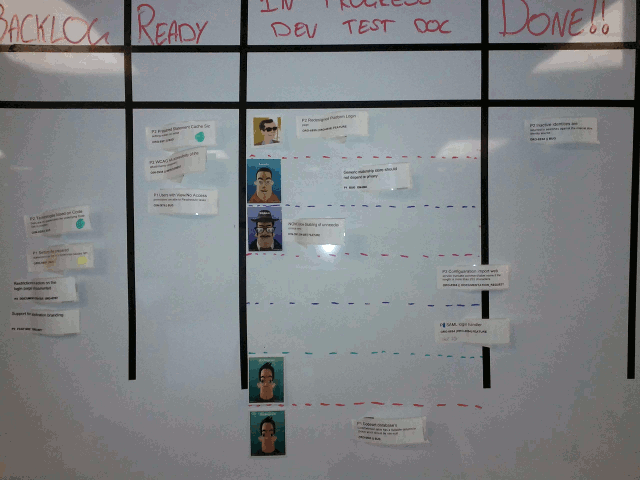Having fun with Kanban
I’ve been Team Lead of a small development team for a few months now. The product and team were new to me at the start as well as the role. It took a while to feel confident in my ability to deliver a quality product and maintain a happy team.
My approach to Team Leading has been strongly influenced by what I feel worked well in other teams while avoiding the things that made me tear my hair out as a developer. Four hour planning meetings anyone?
One technique that has really caught my interest is Kanban. Having worked for a company that developed software for manufacturing plants I was familiar with some of the concepts around pull based scheduling and the Kanban board game is a fun way to learn some of the concepts as applied to developing software. As with any agile methodology there is no hard and fast way to do it. Or at least I’ve never seen anyone doing any “pure” agile. For better or worse we do what feels right and isn’t too far from what we’re used to. My flavour of Kanban is no exception.
Tracking
A larger team I was part of had the luxury of a dedicated Project Manager who would studiously track stats about the cycle time of a card and maintain a cumulative flow diagram of the various states of development. Over time these charts built up a great picture of how the project was performing and told some quite interesting stories.
Without that luxury I was a bit unsure of how to track my team’s performance. Inspired by a co-worker who produced a (dub-step) time lapse video of a few of their stand-ups I thought something similar could be created for our Kanban wall. So for 10 days, after each stand-up I’d take a picture of wall hoping that the end result would tell a story.

Results
What did I learn? Firstly the position of the camera matters more than I thought. The image is too jumpy for my liking. Does it tell a story? Yes, but it wasn’t quite what I had anticipated. I was expecting to see a good flow through the in-progress column. Instead what I notice most is the growing of the done column. The result of both is the same but focus isn’t immediately brought to done as maybe it should be.
Is the team performing well? The sequence shows that WIP is a bit high, there are cards that are almost done but haven’t quite made it. If we focused a bit more on finishing them the Done column would be more impressive. Overall we’re making progress each day. Our retrospective is tomorrow and I’ll see what the team thinks.
Comments?
If you’ve got suggestions for ways to improve our Kanban approach leave a comment